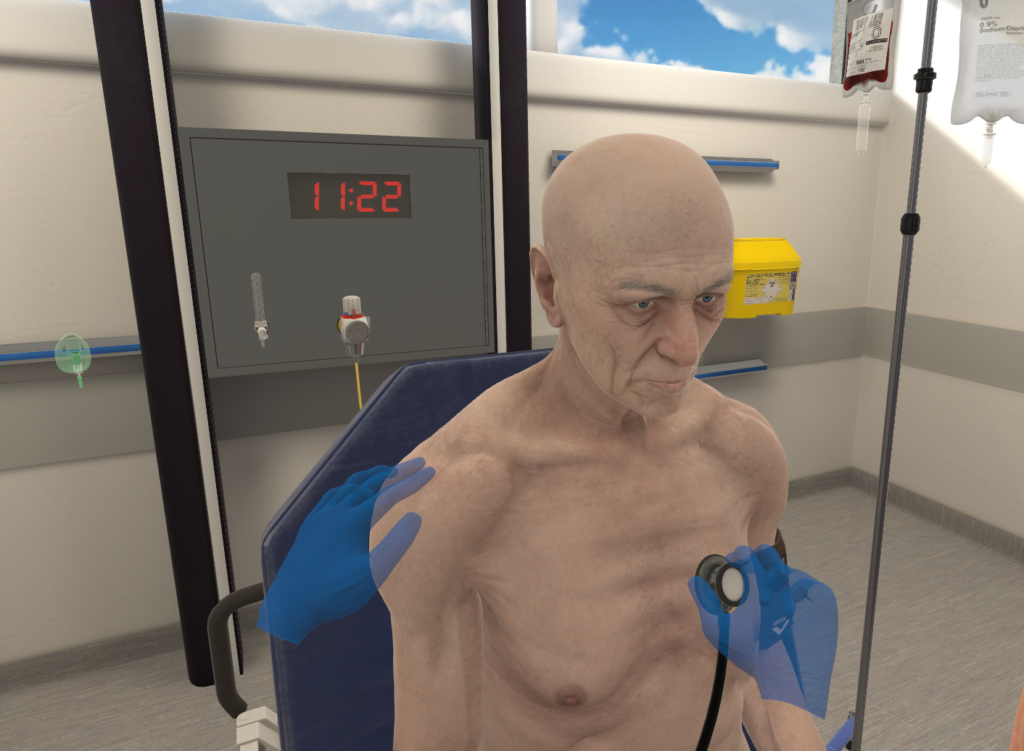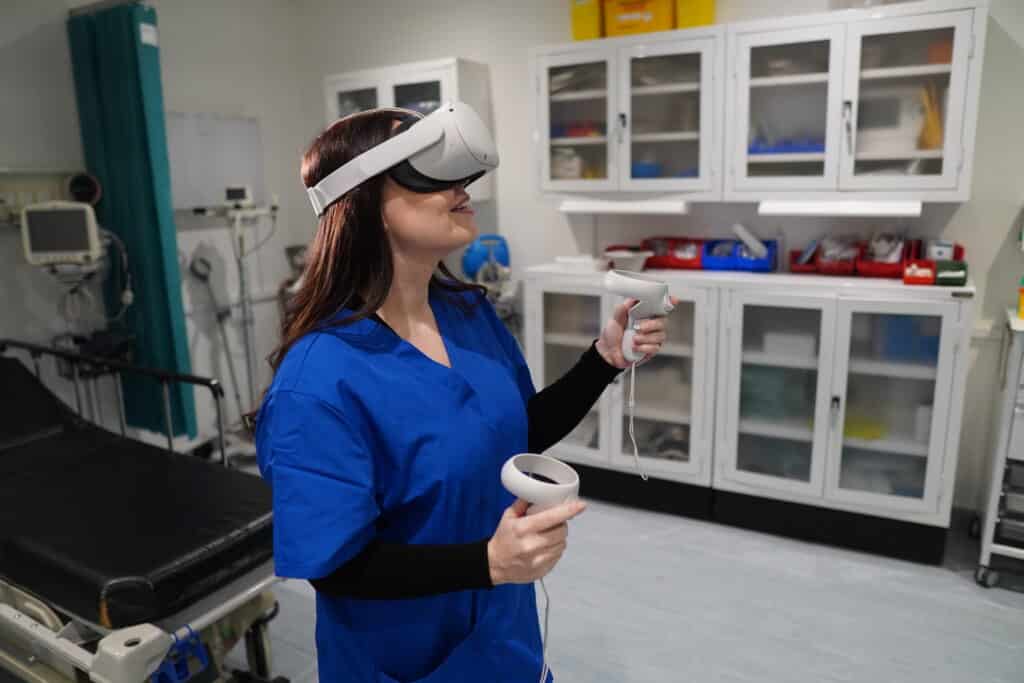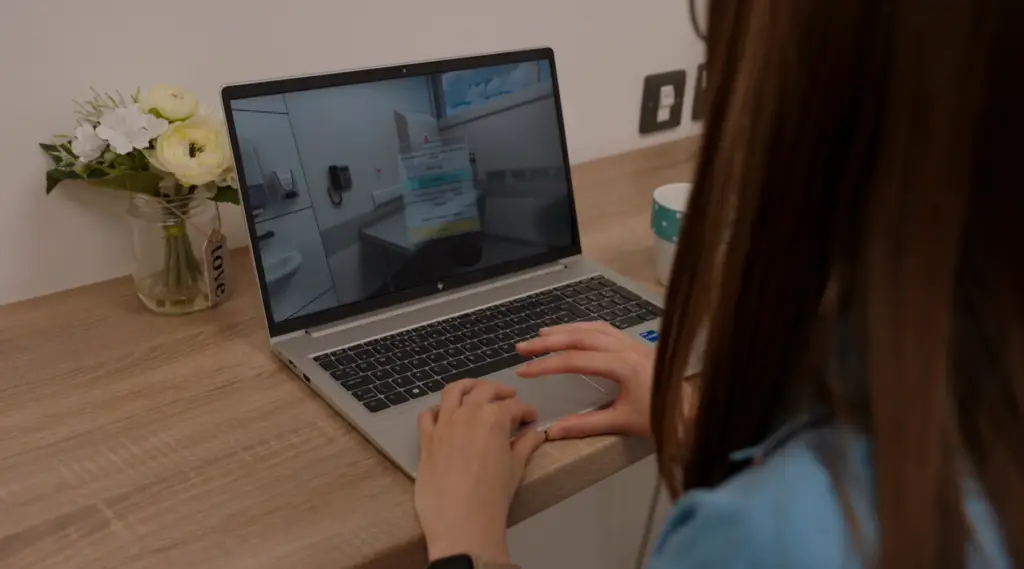As a student in her final year of medical school, Dr. Alice Jones was introduced to virtual reality during her clinical simulations.
Little did she know that her initial experience with VR would be a formative one, sparking an interest in teaching and supporting medical students through their simulation program.
Now a doctor herself, Dr. Jones uses the same innovative technology with her students to provide realistic clinical scenarios that students can work through autonomously to support the application of their theoretical knowledge.
As a medical student, Alice enjoyed simulation but felt the typical manikin-based simulations left an element of realism to be desired.
Like many other physical simulations, students work in groups or pairs, dividing responsibilities and collaboratively conducting care for one patient case.
While this method has its pros, the fact remains that doctors in practice simply do not function in the same way.
Doctors are expected to make initial assessments autonomously, drawing their own initial conclusions independently and making clinical decisions with information gathered from history taking, observations, or examinations.
Support measures and collaborative opportunities are in place, like calling upon a mentor for guidance or contacting a senior to report findings and request further assistance.
However, in physical simulation, dividing responsibilities and making collective decisions alleviates some of the stress of independent practice. While that can be helpful at earlier stages of learning, in the final year of schooling, it’s imperative that students have meaningful experiences in applying their skills independently to reflect the role they are about to step into.
While initially apprehensive about the realism of VR clinical simulations, Alice quickly realized the value of engaging in OMS scenarios, as they “absolutely mirrored real-life practice.”
Dr. Jones noted that OMS scenarios helped her be more fluid in her approach to patient care and in treating certain conditions than she otherwise would have been without attempting in VR first.
Considering how much learning takes place following a simulation with reflective thinking and debriefing, Alice was able to use the feedback provided by the OMS platform to self-identify skill or knowledge gaps, refresh concepts, and retry the scenario to ensure she had all the tools she needed to succeed in practice.
Because of this accessibility and repeatability with OMS scenarios, Dr. Jones feels that when she was ultimately faced with the real-life versions of the scenarios, she was more thorough in her approach.
Had she not had the opportunity to make mistakes and learn from them in the safety of VR, she would have likely made those mistakes while treating a patient.
Dr. Jones feels a similar need to provide her students with an opportunity to make mistakes in VR first, with the opportunity to repeat scenarios after reflecting on feedback.
“It’s better for mistakes to happen in simulation than in real life for patient care”.
That’s one reason Dr. Jones has implemented VR scenarios with her students. She also notes that human factors are important in VR scenarios, like maintaining your calm and not allowing distractions or disruptions to interfere with your patient care.
Why Dr. Jones chose VR for Year 5 medical students
Dr. Jones now uses OMS scenarios in her teaching with other final-year medical students, who are just getting ready to sit for final exams and embark on their practice journey.
By Year 5, medical students have completed all of their didactic coursework and are focused on finishing the year strong with final exams.
In the lead-up to finals, Dr. Jones and the Undergraduate Medical Education (UGME) team offered students access to OMS scenarios as part of their preparation for finals and, ultimately, in their preparation for practice.
As the first group of volunteers saw the value in VR as both a means to study for finals while honing skills for practice, more and more students flocked to VR simulations.
For Dr. Jones, using virtual reality to support the final phase of schooling is a no-brainer.
“It’s hard to find a modality that both helps with studying and also makes you a better doctor, and OMS is one of those.”

Teaching with VR
Dr. Jones and the UGME team have been working with students to integrate all their knowledge and prepare for the transition to practice.
As with any simulation, setting expectations and debriefing are highly important to the process.
For Year 5 medical students, Dr. Jones makes it a point to let students in on ‘the why’ – using VR simulations across specialties is “going to reflect the situation you’ll be in, and that’s why it’s a valuable learning experience.”
She encourages students to use their feedback to dig into more nuanced parts of patient care in the debrief.
For example, students might discuss ways to limit or safely administer fluids when they don’t have all the information but must make a treatment decision.
One debriefing in particular centered around a decision not to catheterize a patient with sepsis. For the student wanting to prioritize antibiotics, it’s an understandable thought process. However, with feedback and debriefing, Dr. Jones and her students discussed why, when, and how to measure urine output for a septic patient while still prioritizing the administration of antibiotics.
These types of experiences and conversations help students tackle uncertainties and see that they know more than they think they do, and when they don’t know what to do next, they have the tools to figure it out.

Major takeaways from VR simulations
Nuanced conversations like the examples above also show students that all the skills they need to call upon aren’t necessarily happening in a standard, textbook way.
Conditions and diagnoses are not always textbook, and multiple things can be true at once, making VR a great tool for students learning to apply a diagnostic pathway in patient care.
Dr. Jones notes that for medical students, there’s rarely an opportunity to make and implement a management plan.
Typically, the processes stop following the history taking and reaching a diagnosis.
While students can often list what they would do for treatment, VR simulations provide a unique opportunity for learners to actually implement a care plan.
In real-world practice, examinations and treatments often occur simultaneously, and OMS helps teach students the skills of prioritizing where management fits in with assessment.
It’s a continuous process to collect information, analyze observations, interpret test results, and make clinical decisions – and that doesn’t always happen in a stepwise fashion.
In VR, learners get a real sense of what it’s like to integrate assessment and treatment, essentially moving from the “knows how” to “shows how” category of Miller’s pyramid.
They’re also able to better determine at what point to ask for assistance, achieving the balance between information gathering and taking action while recognizing the urgency and severity of a situation that might call for more senior involvement.
Students taking part in the VR experience also felt similarly, with one student highlighting the autonomy of managing a patient case independently, as realistic VR scenarios provide learners with “the power to make decisions while having the space to learn from mistakes.”
Others were able to self-identify areas for improvement in their own clinical performance, such as time management in conducting an A-E assessment, and left scenarios “feeling more like a competent doctor”.
As a student herself, Dr. Jones fondly reflects on an OMS scenario involving a virtual patient, Deepak, who ultimately is diagnosed with a bowel perforation.
Dr. Jones recalls this particular scenario as a shining example of putting it all together – from history taking to observations, examinations, and imaging findings.
Not only did it make an impact on her as a student, it also continued to have a place in her mind as she became a licensed professional.
According to Dr. Jones, “I remember in clinical practice having patients with perforated bowels, and my brain going back to Deepak.”
Just as her university invested in new technology to support student progress, Dr. Jones seeks to be a part of a similar movement for her students.
She wants her students to get all the experience they can before entering the clinical world, investing in their learning now while helping them stay prepared in the future.
With around 70 students who initially participated in the VR program, Dr. Jones and the Undergraduate Medical Education team are seeking to expand the program, accommodating all 160 students in Year 5, and implementing VR across the curriculum, so students across all years can gain meaningful practical experience as they progress through schooling and move into practice.
